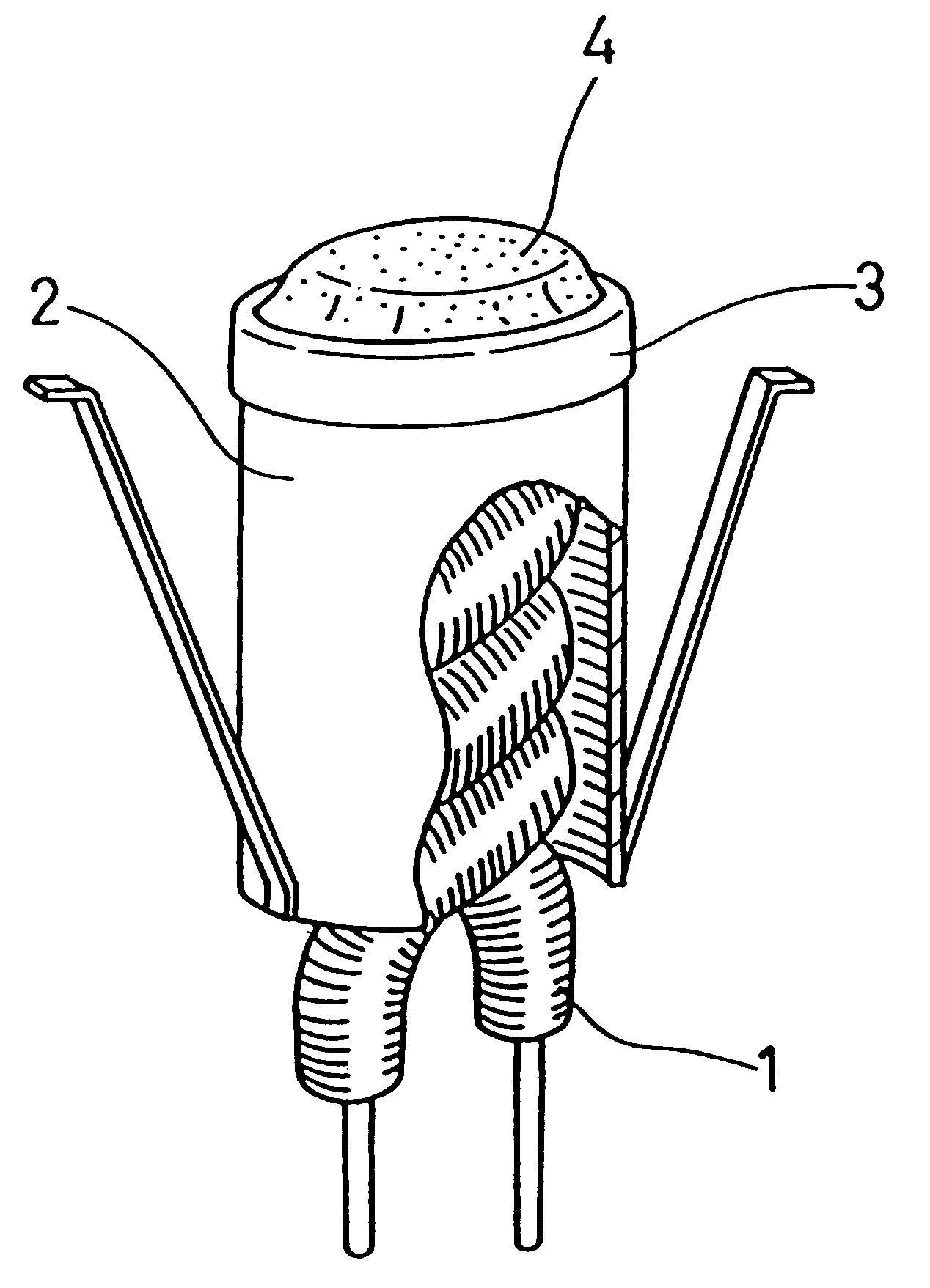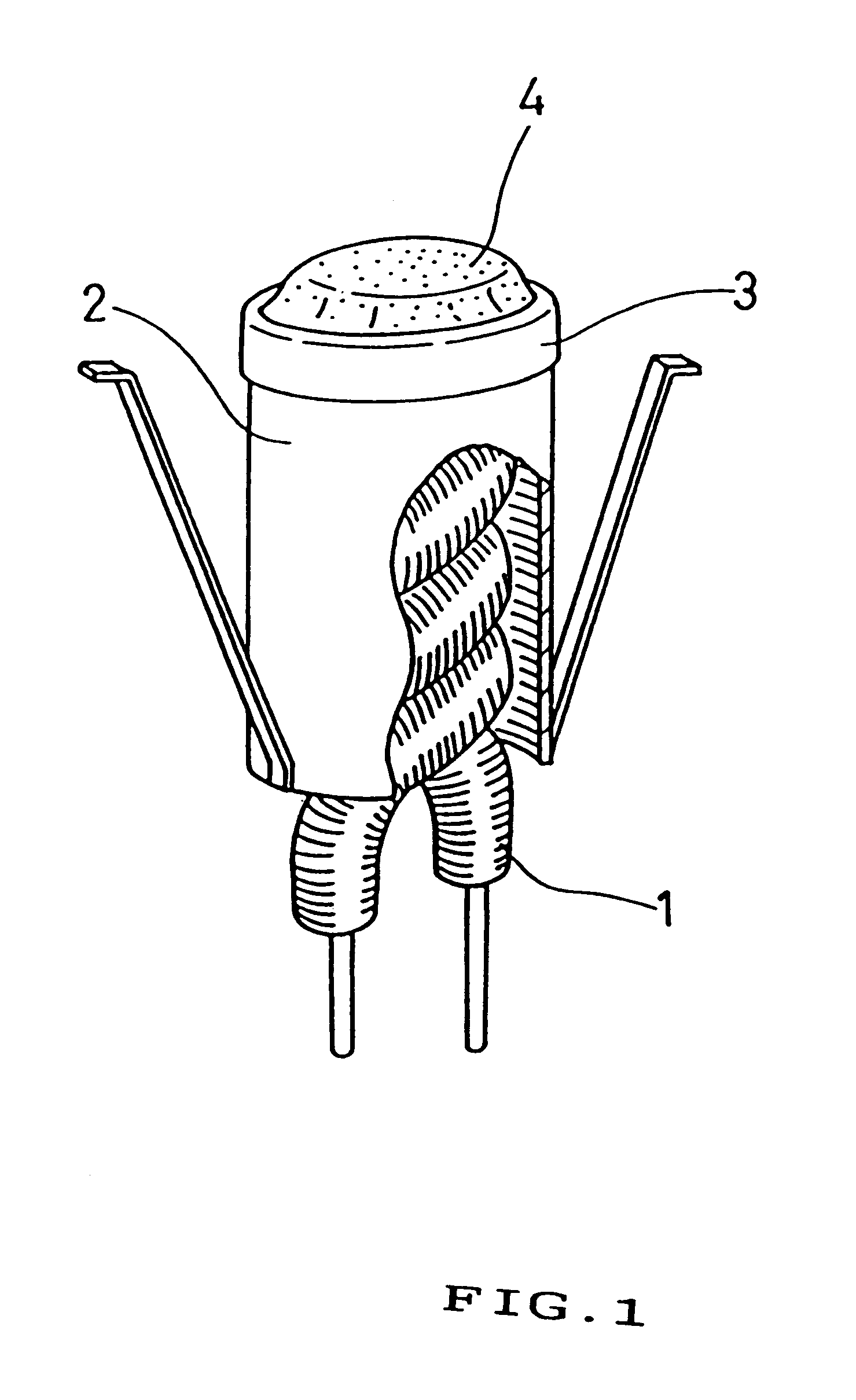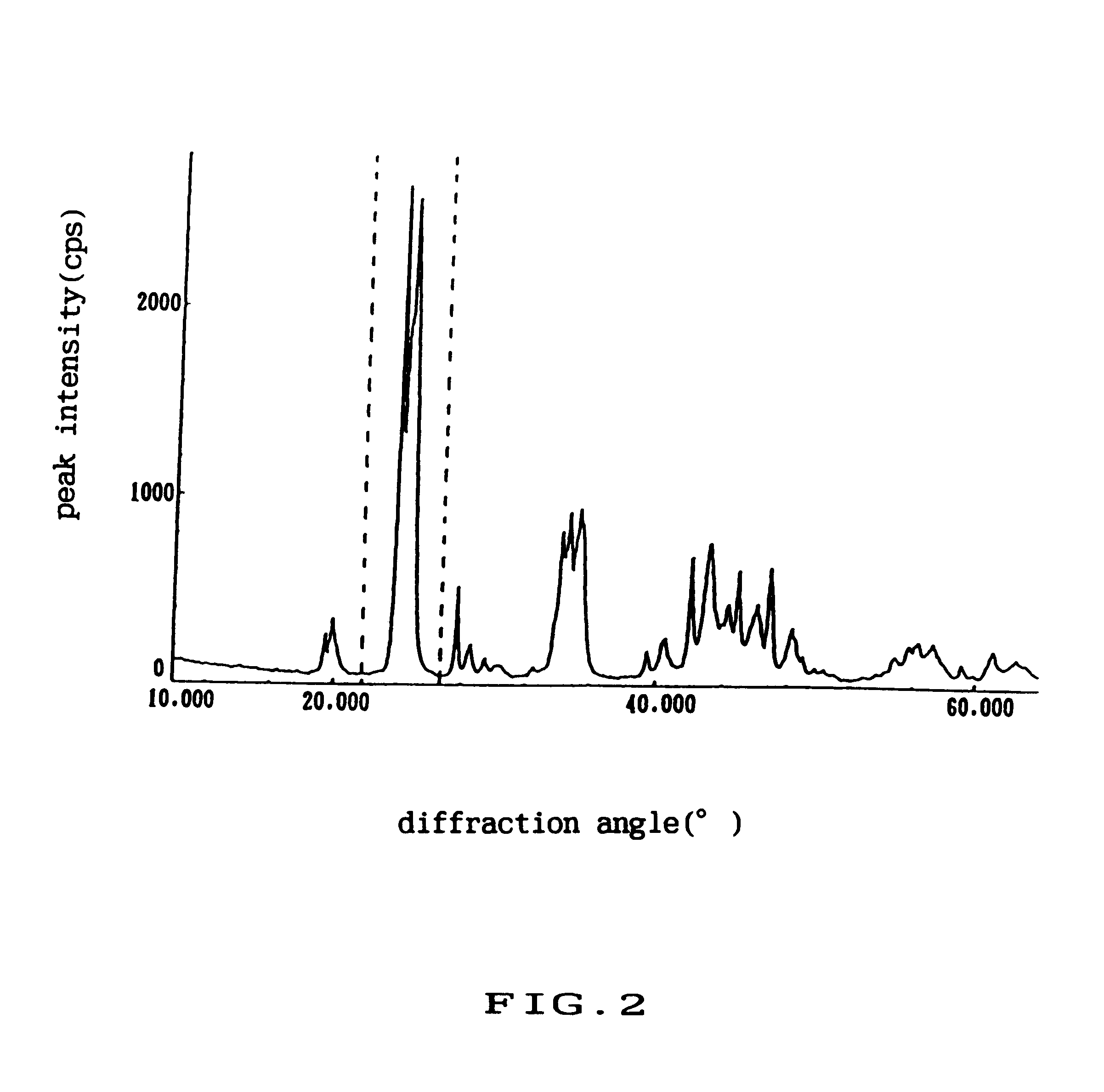Emitter material for cathode ray tube having at least one alkaline earth metal carbonate dispersed or concentrated in a mixed crystal or solid solution
a technology of alkaline earth metal carbonate and emitter material, which is applied in the manufacture of discharge tube main electrodes, electric discharge tubes/lamps, electrode systems, etc., can solve the problems of inability to maintain sufficient lifetime and inability to employ conventional emitter materials, and achieves a larger screen size, higher brightness, and the effect of improving the quality of the material
- Summary
- Abstract
- Description
- Claims
- Application Information
AI Technical Summary
Benefits of technology
Problems solved by technology
Method used
Image
Examples
first embodiment
Referring now to figures, there are illustrated the present invention.
Binary carbonate, which was synthesized by the sodium carbonate precipitation method and shows the X-ray diffraction pattern as shown in FIG. 18, and BaCO.sub.3 were mixed at the weight ratio of 2:1, thus making a mixed carbonate A. Then, the above mentioned binary carbonate and SrCO.sub.3 were mixed with the weight ratio of 2:1, thus making a mixed carbonate B. Further, the above mentioned binary carbonate, BaCO.sub.3 and SrCO.sub.3 were mixed at the weight ratio of 4:1:1, thus making a mixed carbonate C.
The above mentioned binary carbonate was obtained through the following steps of: dissolving 5 kilograms of barium nitrate and 4 kilograms of strontium nitrate in 100 liters of hot water at a temperature of 80.degree. C. (This aqueous solution is designated as "solution W" for ease of reference.); dissolving 8 kilograms of sodium carbonate in hot water at a temperature of 80.degree. C. (This aqueous solution is d...
example 2
Referring now to the figures, there is illustrated the second embodiment of the present invention.
Ternary carbonate, which was synthesized by the sodium carbonate precipitation method and shows the X-ray diffraction pattern as shown in FIG. 19, and BaCO.sub.3 were mixed at a weight ratio of 2:1, thus making a mixed carbonate D.
The above mentioned ternary carbonate was obtained through the following steps of: dissolving 4.8 kilograms of barium nitrate and 3.8 kilograms of strontium nitrate and 0.75 kilograms of calcium nitrate in 100 liter of hot water at a temperature of 80.degree. C. (This aqueous solution is designated "solution Y" for ease of reference.); dissolving 8 kilograms of sodium carbonate in 35 liter of hot water at a temperature of 80.degree. C. (This aqueous solution is designated "solution Z" for ease of reference); stirring the solution Y and keeping it at the temperature of 80.degree. C.; adding the solution Z into the solution Y at the adding rate of 2 liters per o...
example 3
Referring now to figures, there is illustrated the third embodiment of the present invention.
Barium nitrate, strontium nitrate and sodium carbonate were respectively dissolved into pure water to make barium nitrate aqueous solution (K), strontium nitrate aqueous solution (L) and sodium carbonate aqueous solution (N). All of the concentrations of the above mentioned K, L and N were controlled to be 0.5 mol / liter. Then, barium nitrate aqueous solution (K) and strontium nitrate aqueous solution (L) at temperatures of 80.degree. C. were added in an amount of 30 liters each into 60 liters of sodium carbonate aqueous solution (N) that was heated to 80.degree. C., at different adding rates, thus making a precipitate of alkaline earth metal carbonate. In this example, the synthesizing reaction was carried out at two types of adding rates (K and L) as shown in FIG. 9 and FIG. 10. As is apparent from FIG. 9, in the first type of adding rate, the adding rate of K was constant and the adding ra...
PUM
 Login to View More
Login to View More Abstract
Description
Claims
Application Information
 Login to View More
Login to View More - R&D
- Intellectual Property
- Life Sciences
- Materials
- Tech Scout
- Unparalleled Data Quality
- Higher Quality Content
- 60% Fewer Hallucinations
Browse by: Latest US Patents, China's latest patents, Technical Efficacy Thesaurus, Application Domain, Technology Topic, Popular Technical Reports.
© 2025 PatSnap. All rights reserved.Legal|Privacy policy|Modern Slavery Act Transparency Statement|Sitemap|About US| Contact US: help@patsnap.com



